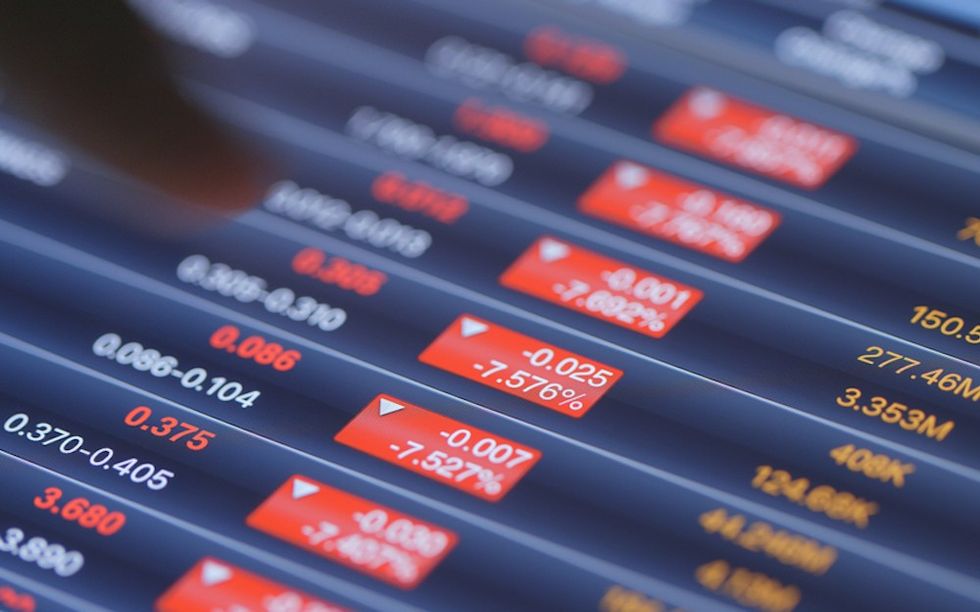A North American recession could very well be in the cards.
The risk of a North American recession over the next year has now climbed above 50%, according to a new report from BMO Chief Economist Douglas Porter.
Accordingly, the bank is adjusting its forecast to reflect a moderate downturn in the first half of 2023 for both the United States and Canadian economies. “We previously had one negative quarter built in, signalling the relatively high downside risks to the economy from soaring inflation and the need for aggressive rate hikes,” writes Porter.
READ: Sorry -- Inflation Still Isn't Low Enough to Prevent Rate Hikes
Now, these risks have been amped up thanks to sky-high inflation, particularly south of the border, and by the rising possibility of a monetary overshoot, says Porter. Furthermore, the economist highlights how geopolitical factors are adding an “unwanted ingredient to the noxious mix,” with reference to President Biden’s comments on Taiwan and “Putin’s latest rattling of the nuclear sabres.”
Porter says that financial markets are now absorbing the harsh reality that the Feds cautioned about: we won’t see a retreat on the inflation front in any time soon. “The steep back-up in global rates further bludgeoned stocks, resource prices, and commodity currencies this week given mounting recession odds,” writes Porter.

Porter wasn’t particularly surprised with the Federal Open Market Committee’s (FOMC) recent 75-basis-point (bps) rate hike -- and he expects more to follow in the US.
“Alongside an aggressive upward revision in the dot plot and Chair Powell’s unwavering message, we have further cranked up our expectation on additional Fed rate hikes,” writes Porter. “Bluntly, it makes little sense to veer far from the Fed’s stated expectations at this time, since it appears policymakers have strapped on the blinders and will keep at it until inflation has convincingly cracked. And that will still take some time yet.”
As a result, Porter says we can expect a 75 bps hike in November, 50 bps in December, and 25 bps in the first meeting in 2023. This will take the funds rate to a peak of 4.50% to 4.75% early next year, a net addition of 25 bps at each one of those three meetings. After this, we can expect the rate to remain consistent through 2023, predicts Porter.
He highlights the inevitable reality that this aggressive series of rate hikes will take its toll on the US economy. “After all, we are now looking at a cumulative 450 basis points of tightening (with 300 bps already in the bag) in the short space of under a year,” writes Porter. He highlights how, at the FOMC meeting just one year ago, the Fed was only talking about the possibility of beginning to taper QE.
If the past is any indicator of future events, a recession in the US is definitely in the cards.
As Porter highlights, the only other times when the Fed has hiked rates so aggressively in the post-war era were in 1973, 1980, and 1981 -- and all three incidences resulted in recession.
“An old rule of thumb is that every 100 bps of hikes could clip real GDP growth by up to 1 percentage point over a year,” writes Porter. “The extra 75 bps of Fed tightening we are now assuming will cut growth next year by roughly half a point to zero, with outright declines in the first two quarters.”
This grim outlook, in addition to a further drop in oil prices last week to below $80 did little to halt the back-up in global yields, says Porter. He says that BMO is lifting its near-term assumption on 10-year-yields, with a test of the 4% level likely by the end of the year.

Naturally, the unfortunate series of events in the US and the rise in oil prices will impact Canada, resulting in BMO downgrading its Canadian growth outlook. We can now expect Canada’s GDP to decline in the first two quarters of 2023, carving annual growth to zero, from 1.0% previously. The bank is also trimming its WTI oil price assumption by $5/bb; this year and next to an average of $95 and $90.
“Until recently, the modest decline in the Canadian dollar has been almost entirely a story of a rollicking US dollar,” writes Porter. “However, the latest setback is more loonie-specific, amid sharply widening US-Canada rate differentials and sagging energy prices. (No need to mention that the loonie saw precisely no lift from soaring energy prices earlier this year, but is now being fully caught in the downdraft).”
Porter highlights how currencies have a history of overshadowing and that he suspects the loonie is at-risk of a “more intense short-term sell-off.” He says a test of the 71-cent level is a risk in the coming weeks.
“Digression: As economists, we can only shake our heads in wonder that relatively low inflation is somehow bad news for a currency; by that twisted logic, the Argentine peso and Turkish lira should be on fire,” writes Porter. “Ultimately, we expect the US dollar to lose some of its formidable steam around the turn of the year as the end of Fed hikes comes into view. And, we thus expect the Canadian dollar to gradually recover in 2023, albeit ending next year lower than we previously expected at around 77 cents ($1.30).”





















